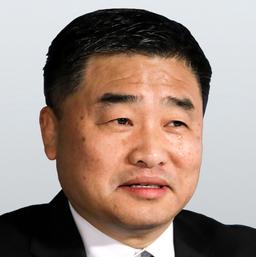“Zero non-COVID” is the name that people in China are calling the regime’s new pandemic management policy. The Chinese Communist Party (CCP) has aggressively pushed the whole country toward an all-COVID-positive state.
China’s annual rubber-stamp legislature is usually in session during the month of March. It’s widely expected that the coming session will focus on saving China’s economy because it’s on the edge of collapse after the three-year-long zero-COVID policy.
Party leader Xi Jinping is clearly willing to pay any price to reopen the country.
Government employees of Chongqing city and Zhejiang province received notices telling them to return to their offices to work even if they’ve tested positive for COVID-19, as long as their symptoms are mild.
The total population of Chongqing city is more than 31 million, and Zhejiang province’s population is more than 57 million.
A local official in Shanghai told The Epoch Times on Dec. 27 that his office had received instructions to do whatever it could to push the city into the COVID peak status.
“Let those who are supposed to become positive become positive, and let those who are supposed to die, die,” the official said, using the pseudonym Song Wen.
All state-owned media outlets are mute about the current situation in the country, and reports from different government agencies are conflicting.
The Zhejiang provincial government recorded 1 million new COVID-19 cases on Dec. 25, 2022, while the Chinese Center for Disease Control and Prevention only reported 2,983 new cases in the whole nation on the same day.
The regime announced that on Jan. 8, China will totally reopen travel in and out of the country, which has triggered concern in countries around the globe. Italian officials reported on Dec. 28, 2022, that 50 percent of passengers on two flights from China tested positive for COVID-19.

China, a country with a population of more than 1.4 billion, moved from a zero-COVID policy to a zero-non-COVID policy within a month. The sudden change has left health experts worldwide feeling uncertain, because the explosion in COVID-19 cases in China may lead to the whole world being exposed to new variants.
Before the policy change, “the disease was spreading intensively because I believe the control measures in themselves were not stopping the disease. And I believe China decided strategically that was not the best option anymore,” Ryan said.
The regime’s change from a zero-COVID to a zero-non-COVID policy didn’t come without signs.
Starting in September 2022, many Chinese state-owned media openly discussed not overly enforcing the zero-COVID policy.
For a country that’s been enforcing the mask-wearing principle as a part of its zero-COVID policy, the event was the first clear sign of the regime’s impending policy change.
On Oct. 28, 2022, Xi said during his short stay in Henan province that China’s socialist system was established with the sacrifice of human lives. He said that this sacrifice is also needed in the modern era. He visited the province after the CCP’s 20th Congress earlier in the month, in which he was reelected to a third term as the head of the CCP.
On Nov. 24, 2022, a fire started in a high-rise apartment building in Urumqi city that caused many deaths and injuries because the fire escape was locked. The incident later caused widespread protests in many cities. On Dec. 7, 2022, Beijing officially lifted its three-year-long zero-COVID policy.
It’s obvious that the CCP started the policy change quietly as early as late September 2022. The widespread protests after the Urumqi fire on Nov. 24, 2022, became the perfect excuse for the regime to openly adopt a new policy.
The reason for the regime’s policy change is clear: to save the regime’s ruling power at the cost of Chinese people’s lives.





